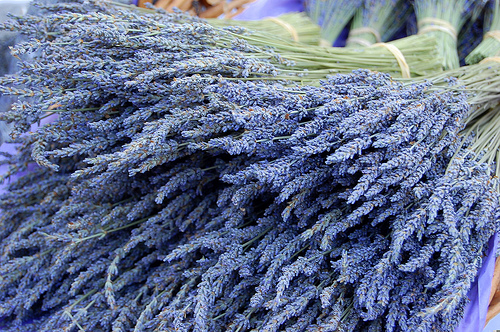Aromatherapy, also known as essential oil therapy, is the therapeutic application of plant essential oils to improve physical, emotional, and spiritual well-being.
Use of aromatic, perfumed oils dates back thousands of years to ancient Egypt, China, and India. In Egypt, such oils were used after bathing and for embalming mummies. Thousands of years ago the Chinese compiled an encyclopedia of information on the uses of plants, herbs, and different types of wood. In ancient India, aromatic massage was part of Ayurvedic medicine. In addition, the Greeks and Romans used fragrant oils for both medicinal and cosmetic purposes. However, it was the medieval physician Avicenna who first extracted these oils from plants.
René Maurice Gattefossé, a French chemist, originated modern aromatherapy and even the term itself. After burning his hand in a laboratory accident, he used lavender oil to soothe the pain. His hand healed quickly with no scar, and he attributed this outcome to the lavender oil. He published his first thesis, titled “Aromatherapie,” in 1928 and published a book under the same title in 1937. Aromatherapy was revived in the 1960s by French homeopaths Dr. and Mme. Maury. In the 1980s, aromatherapy began to grow in popularity in the United States. It is fairly well-established in England, France, Switzerland, and New Zealand.
Essential oils are typically extracted from various parts of plants and then distilled. These highly concentrated oils can be inhaled or applied through massage, lotions, or bath salts. Oils can be used individually or combined before being applied/inhaled. When applying oils directly to skin, many should be combined with a carrier(ex. grapeseed oil) however some can be applied directly to skin. Popular oils include lavendar, rosemary, eucalyptus, chamomile, tea tree, jasmine, peppermint, lemon, and ylang ylang.
Essential oils are not regulated by the FDA. Additional research is needed to determine the effect of aromatherapy on children as well as women who are pregnant or breastfeeding as well as how oils might interact with medications or other treatments.
Below are some common essential oils and their uses.
| Tea Tree (Melaleuca alternifolia) | Bacterial, fungal, and viral infections |
| Peppermint (Mentha piperita) | Headaches, fever, nausea, and fatigue |
| Lavender (Lavandula angustifolia) | Minor burns, insomnia, pain relief, and wound care |
| German chamomile (Matricaria recutita) | Inflamatory skin problems |
| Bergamot (Citrus bergamia) | Mild antidepressant and tonic |
| Rosemary (Rosmarinus officinali) | Stimulant and anti-infective agent |
| Eucalyptus (Eucalyptus globulus, Eucalyptus radiata, Eucalyptus smithii) | Respiratory infections |
| Ginger (Zingiber officinalis) | Nausea and inflammation |
| Lemongrass (Cymbopogon citratus) | Fungal infections |
| Basil (Ocimum basilicum) | Insect repellent and anti-parasitic |
| Mandarin (Citrus reticulata) | Stomach upset and restlessness, particularly in children |
Source: http://www.takingcharge.csh.umn.edu/explore-healing-practices/aromatherapy
Have you ever used essential oils? Do you have any favorites?






